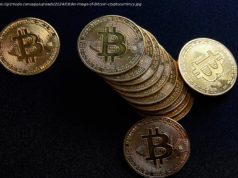Which is the better deal: iPhone 7 or iPhone 8? We compare the two so you can decide whether or not to upgrade.
By
Martyn Casserly | 10 mins ago
Apple iPhone 7:
iPhone 8:
Price comparison from, and manufacturers
Apple has announced its latest range of iPhones, which means there are three new models to tempt potential buyers. The iPhone X might be getting the lion’s share of the headlines, but it will be the more affordable iPhone 8 and 8 Plus that are likely to account for the majority of sales.
So, should you upgrade to the latest iteration if you already have last year’s model? We compare the iPhone 8 to the iPhone 7 to see just how much has changed.
The annual update of the standard iPhone usually means a price cut for the previous incumbent, and this year follows suit.
Apple has reduced the price of the iPhone 7 32GB model by £50 in the UK and $100 in the US, so you can now pick it up for £549 ($549) from Apple’s website or a store.
For more storage, you can move up to 128GB for £649 ($649), which is a similar saving, but you’re out of luck if you want the 256GB version, as it has now been retired.
The new iPhone 8 comes in two flavours, with Apple finally dropping 32GB as the entry-level storage option. Now you can buy a 64GB iPhone 8 for £699 ($699), and the 256GB model will set you back £849 ($849).
Obviously, there will be a multitude of offers available from carriers in the UK, so be sure to shop around before putting any money down.
Pre-Orders for the iPhone 8 start today (September 15), with a release date of September 22. The iPhone 7 will remain on sale, and can be picked up easily online or in-store.
Apple says that the iPhone 8 features an ‘all-new glass design’, but in truth there are plenty of similarities to the previous model.
Size-wise the iPhone 8 and iPhone 7 are almost identical, with only a few tenths of a millimetre more found on the new version. The iPhone 8 is 10g heavier though, which breaks the classic Apple mantra of ‘slimmest, lightest iPhone ever’ that we’ve heard so many times over the years.
Most likely this increase in weight is attributable to the glass surface that now adorns the back of the device. While this looks pretty, glass isn’t exactly the most durable of substances, and will only add to the general slipperiness that plagues modern smartphones.
Seriously, when will designers and engineers take into account that people actually have to hold these very expensive bars of soap?
In this case the return to glass, as last seen on the iPhone 4S, does bring a tangible benefit for users, enabling Apple to include wireless charging on the new device. This is a welcome addition, as is the jaw-dropping fact that it uses Qi charging, the standard favoured by most of the industry.
Other than this aesthetic choice, you’d be hard pressed to tell the difference between the iPhone 7 and the iPhone 8. The display is the same size, as are the now rather dated-looking bezels, all the buttons are in the same place, the curved edges are as elegant and precise as ever, and you still can’t plug in your headphones.
Apple has reduced the colour options on the iPhone 8, making it only available in Space Grey, Silver, or a new version of Gold, but the latter options have dispensed with the two-tone edges that were a Marmite feature on the iPhone 7.
All models in the iPhone 7 and 8 range also feature IP67 water resistance, and as such should survive any spills or quick trips into the sink that would prove the end of a lesser device.
While the iPhone 8 might be slightly heavier and bigger than its predecessor, there was never any doubt that it was going to be faster.
Apple announced a new six-core processor for the iPhone 8, which it calls the A11 Bionic.
This replaces the A10 in the iPhone 7, and gives the new model various speed improvements.
Apple claims the two performance cores will yield increases of 25 percent, while the four high-efficiency cores will be a rather remarkable 75 percent faster.
The GPU in the iPhone 8 is the first one designed by Apple and is promised to deliver the same performance as the previous A10 but using half the power. Pushed harder the new GPU can eclipse the older model by 30 percent, which should be beneficial for anyone playing games on the iPhone 8.
In short, yes. The iPhone 8 should be a fair bit nippier than the iPhone7, which itself was never a slouch.
At first glance the 4.7in screens on both devices appear to be identical, but Apple has made some subtle enhancements to the new version.
The iPhone 8 now sports a True-Tone display, as first seen on the iPad Pro 9.7. This is a clever feature that adjusts the colour temperature and intensity of the screen to match that of the ambient light in the surrounding area. This results in an optimised display that looks good in a variety of settings.
It’s not quite the leap forward that fitting an OLED panel would have brought – Apple saved that for the iPhone X – but it is a minor enhancement that gives the iPhone 8 an edge.
One of the most important features on any iPhone is the camera. With this in mind Apple has upped the specs on the new model with a new 12Mp sensor that it claims provides 83 percent more light, better colour saturation, a wider dynamic range, and lower noise.
These elements should definitely make images appear sharper, richer, and more balanced than on the iPhone 7. Of course, we’ll need to compare the actual results when we finish our in-depth iPhone 8 review, so keep checking back to see how Apple’s promises stand up to scrutiny.
Video has also been improved, with the iPhone 8 now able to record 4K at 60fps, and 1080p slow motion capture at 240 fps, which is double the frame rate of the iPhone 7.
Perhaps the most interesting use for the new cameras will be Augmented Reality. Apple has included new gyroscopes and accelerometers in the iPhone 8, to enable accurate motion tracking for AR games and software.
The company made a big deal of this feature at the release event, with a live demonstration of an AR game being given centre stage for several minutes. It’s early days, but if this takes off then it could be a significant step forward for how we use our iPhones in the near future.
On paper the iPhone 8 represents the usual refinement to the model that came before. In essence it’s an iPhone 7S, but with Samsung now up to the S8 we think Apple didn’t want to be left behind in the name game.






